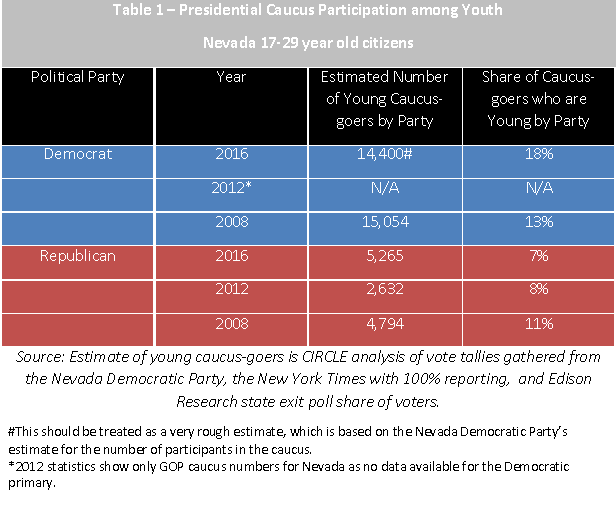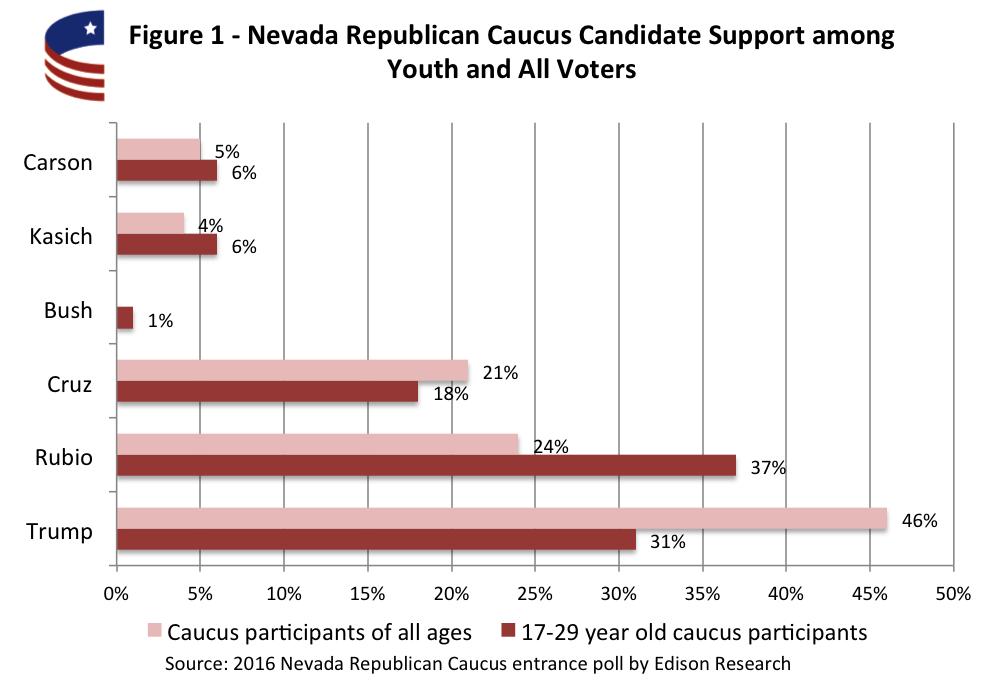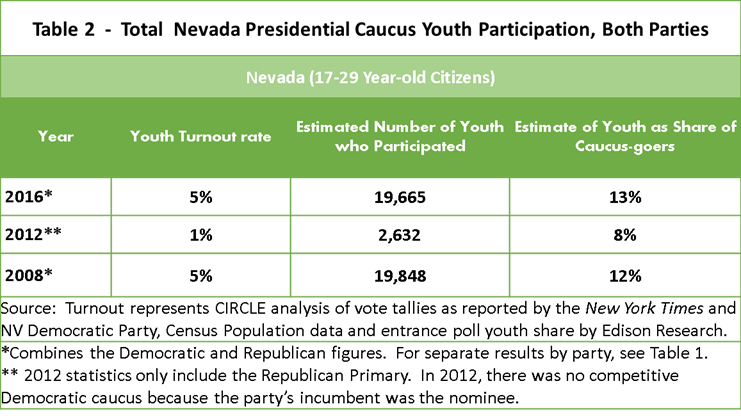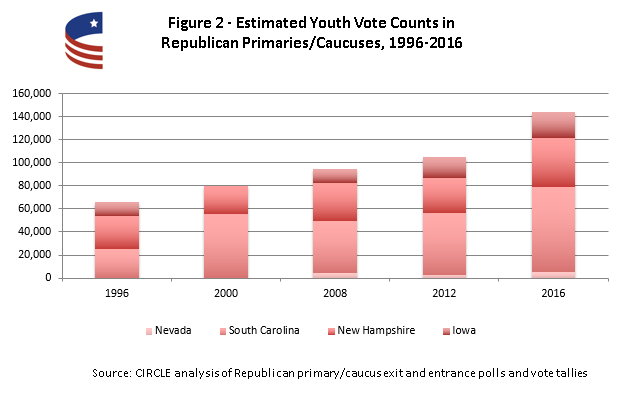Young Republicans in Nevada Caucus in Record Numbers, Not as Keen on Trump
For the fourth state in a row, Republican youth have turned out in record numbers, with their estimated participation in yesterday’s Nevada caucuses not just exceeding 2008, but doubling youth turnout in 2012.
These caucus-goers departed significantly from their elders by not supporting Donald Trump to the same degree. Among all voters, 46% reported supporting Trump in the entrance poll, but only 31% of young people reported the same. Young people were most likely to support Senator Marco Rubio (37%), while 24% of all voters did so. Young people were by far Senator Rubio’s strongest age group.
Earlier this month, our estimates suggested that Democratic youth in Nevada rivaled their 2008 turnout and made up a larger share of caucus-goers than in that previous competitive contest.
 Overall youth turnout in the Nevada caucuses, based on our estimates, is the same as it was in 2008: 5% of young people in the state.[1] The youth share of the NV caucus electorate rose slightly to 13%, buoyed by the increase in youth share of voters in the Democratic caucuses.
Overall youth turnout in the Nevada caucuses, based on our estimates, is the same as it was in 2008: 5% of young people in the state.[1] The youth share of the NV caucus electorate rose slightly to 13%, buoyed by the increase in youth share of voters in the Democratic caucuses.
When it comes to youth participation, 2016 is so far looking a lot like 2008. We know that competitive elections and all the press coverage that comes with them, along with many other factors, impact youth turnout. It appears the 2016 races are further evidencing that narrative. In fact, CIRCLE’s estimates of youth votes cast in early Republican contests suggest that, so far, more Republican-identifying youth have participated in 2016 contests than previous years.[2]
—
[1] This year, the number of votes cast in the Democratic caucuses were not reported by media outlets, but the Nevada Democratic party did release an estimate of participants. As such, these youth data should be treated as a rough estimate.
[2] Before 2008, the Nevada caucuses and South Carolina primary were later in the year, and participation could have been lower because of that factor.








